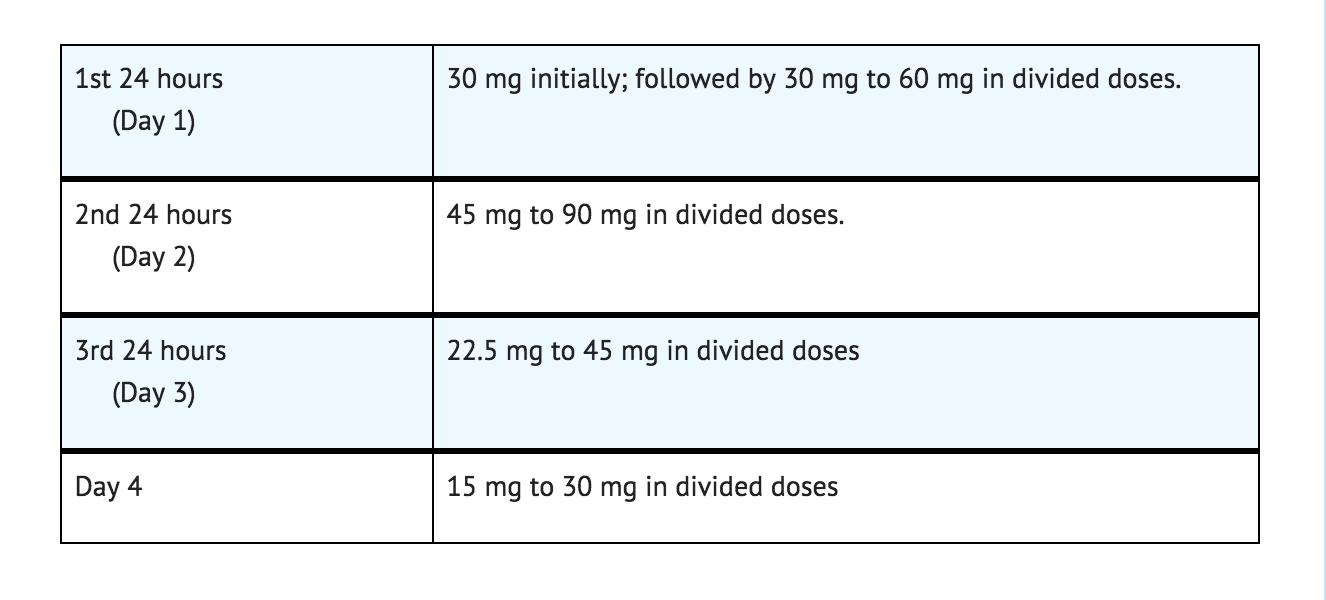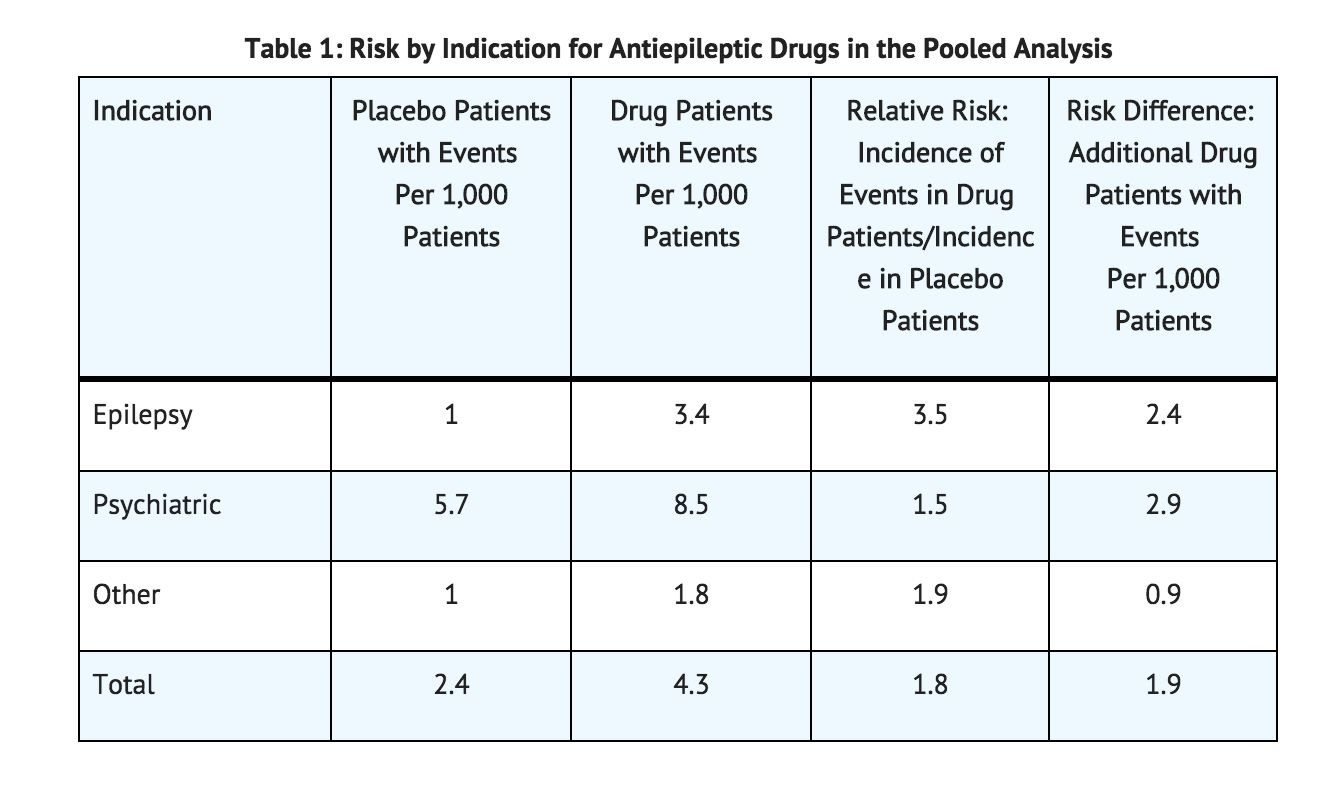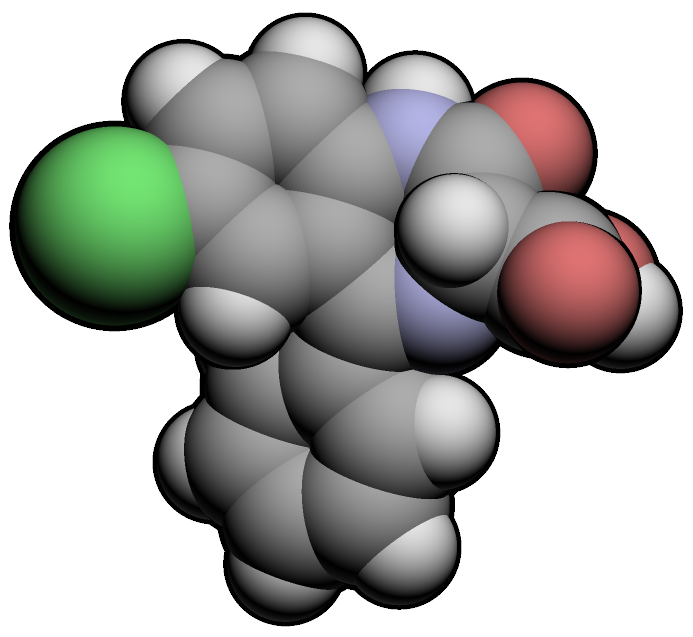Clorazepate Dipotassium
Editor-In-Chief: C. Michael Gibson, M.S., M.D. [1]; Associate Editor(s)-in-Chief: Turky Alkathery, M.D. [2]
Disclaimer
WikiDoc MAKES NO GUARANTEE OF VALIDITY. WikiDoc is not a professional health care provider, nor is it a suitable replacement for a licensed healthcare provider. WikiDoc is intended to be an educational tool, not a tool for any form of healthcare delivery. The educational content on WikiDoc drug pages is based upon the FDA package insert, National Library of Medicine content and practice guidelines / consensus statements. WikiDoc does not promote the administration of any medication or device that is not consistent with its labeling. Please read our full disclaimer here.
Overview
Clorazepate Dipotassium is an antianxiety that is FDA approved for the treatment of anxiety disorders or for the short-term relief of the symptoms of anxiety. Common adverse reactions include drowsiness, dizziness, various gastrointestinal complaints, nervousness, blurred vision, dry mouth, headache, and mental confusion.
Adult Indications and Dosage
FDA-Labeled Indications and Dosage (Adult)
Indications
- Clorazepate dipotassium tablets are indicated for the management of anxiety disorders or for the short-term relief of the symptoms of anxiety. Anxiety or tension associated with the stress of everyday life usually does not require treatment with an anxiolytic.
- Clorazepate dipotassium tablets are indicated as adjunctive therapy in the management of partial seizures.
- The effectiveness of clorazepate dipotassium tablets in long-term management of anxiety, that is, more than 4 months, has not been assessed by systematic clinical studies. Long-term studies in epileptic patients, however, have shown continued therapeutic activity. The physician should reassess periodically the usefulness of the drug for the individual patient.
- Clorazepate dipotassium tablets are indicated for the symptomatic relief of acute alcohol withdrawal.
Dosage
For the Symptomatic Relief of Anxiety
- Clorazepate dipotassium tablets are administered orally in divided doses. The usual daily dose is 30 mg. The dose should be adjusted gradually within the range of 15 mg to 60 mg daily in accordance with the response of the patient. In elderly or debilitated patients it is advisable to initiate treatment at a daily dose of 7.5 mg to 15 mg.
- Clorazepate dipotassium tablets may also be administered in a single dose daily at bedtime; the recommended initial dose is 15 mg. After the initial dose, the response of the patient may require adjustment of subsequent dosage. Lower doses may be indicated in the elderly patient. Drowsiness may occur at the initiation of treatment and with dosage increment.
For the Symptomatic Relief of Acute Alcohol Withdrawal
The following dosage schedule is recommended:

- Thereafter, gradually reduce the daily dose to 7.5 mg to 15 mg. Discontinue drug therapy as soon as patient’s condition is stable.
- The maximum recommended total daily dose is 90 mg. Avoid excessive reductions in the total amount of drug administered on successive days.
As an Adjunct to Antiepileptic Drugs
- In order to minimize drowsiness, the recommended initial dosages and dosage increments should not be exceeded.
Adults
- The maximum recommended initial dose in patients over 12 years old is 7.5 mg three times a day. Dosage should be increased by no more than 7.5 mg every week and should not exceed 90 mg/day.
Off-Label Use and Dosage (Adult)
Guideline-Supported Use
There is limited information regarding Off-Label Guideline-Supported Use of Clorazepate Dipotassium in adult patients.
Non–Guideline-Supported Use
There is limited information regarding Off-Label Non–Guideline-Supported Use of Clorazepate Dipotassium in adult patients.
Pediatric Indications and Dosage
FDA-Labeled Indications and Dosage (Pediatric)
Indications
- Partial seizure; Adjunct
Dosage
Children: (9 to 12 years)
- The maximum recommended initial dose is 7.5 mg two times a day. Dosage should be increased by no more than 7.5 mg every week and should not exceed 60 mg/day.
Off-Label Use and Dosage (Pediatric)
Guideline-Supported Use
There is limited information regarding Off-Label Guideline-Supported Use of Clorazepate Dipotassium in pediatric patients.
Non–Guideline-Supported Use
There is limited information regarding Off-Label Non–Guideline-Supported Use of Clorazepate Dipotassium in pediatric patients.
Contraindications
Clorazepate dipotassium tablets are contraindicated in patients with:
- known hypersensitivity to the drug.
- acute narrow angle glaucoma.
Warnings
Use in Depressive Neuroses or Psychotic Reactions
Clorazepate dipotassium tablets are not recommended for use in depressive neuroses or in psychotic reactions.
Interference with Psychomotor Performance
Patients taking clorazepate dipotassium tablets should be cautioned against engaging in hazardous occupations requiring mental alertness, such as operating dangerous machinery including motor vehicles.
Concomitant Use with CNS Depressants
Since clorazepate dipotassium has a central nervous system depressant effect, patients should be advised against the simultaneous use of other CNS depressant drugs, and cautioned that the effects of alcohol may be increased.
Physical and Psychological Dependence
Withdrawal symptoms (similar in character to those noted with barbiturates and alcohol) have occurred following abrupt discontinuance of clorazepate. Withdrawal symptoms associated with the abrupt discontinuation of benzodiazepines have included convulsions, delirium, tremor, abdominal and muscle cramps, vomiting, sweating, nervousness, insomnia, irritability, diarrhea, and memory impairment. The more severe withdrawal symptoms have usually been limited to those patients who had received excessive doses over an extended period of time. Generally milder withdrawal symptoms have been reported following abrupt discontinuance of benzodiazepines taken continuously at therapeutic levels for several months. Consequently, after extended therapy, abrupt discontinuation of clorazepate should generally be avoided and a gradual dosage tapering schedule followed.
Caution should be observed in patients who are considered to have a psychological potential for drug dependence.
Evidence of drug dependence has been observed in dogs and rabbits which was characterized by convulsive seizures when the drug was abruptly withdrawn or the dose was reduced; the syndrome in dogs could be abolished by administration of clorazepate.
Suicidal Behavior and Ideation
Antiepileptic drugs (AEDs), including clorazepate dipotassium, increase the risk of suicidal thoughts or behavior in patients taking these drugs for any indication. Patients treated with any AED for any indication should be monitored for the emergence or worsening of depression, suicidal thoughts or behavior, and/or any unusual changes in mood or behavior.
Pooled analyses of 199 placebo-controlled clinical trials (mono- and adjunctive therapy) of 11 different AEDs showed that patients randomized to one of the AEDs had approximately twice the risk (adjusted Relative Risk 1.8, 95% CI:1.2, 2.7) of suicidal thinking or behavior compared to patients randomized to placebo. In these trials, which had a median treatment duration of 12 weeks, the estimated incidence rate of suicidal behavior or ideation among 27,863 AED-treated patients was 0.43%, compared to 0.24% among 16,029 placebo-treated patients, representing an increase of approximately one case of suicidal thinking or behavior for every 530 patients treated. There were four suicides in drug-treated patients in the trials and none in placebo-treated patients, but the number is too small to allow any conclusion about drug effect on suicide.
The increased risk of suicidal thoughts or behavior with AEDs was observed as early as one week after starting drug treatment with AEDs and persisted for the duration of treatment assessed. Because most trials included in the analysis did not extend beyond 24 weeks, the risk of suicidal thoughts or behavior beyond 24 weeks could not be assessed.
The risk of suicidal thoughts or behavior was generally consistent among drugs in the data analyzed. The finding of increased risk with AEDs of varying mechanisms of action and across a range of indications suggests that the risk applies to all AEDs used for any indication. The risk did not vary substantially by age (5 to 100 years) in the clinical trials analyzed. Table 1 shows absolute and relative risk by indication for all evaluated AEDs.

The relative risk for suicidal thoughts or behavior was higher in clinical trials for epilepsy than in clinical trials for psychiatric or other conditions, but the absolute risk differences were similar for the epilepsy and psychiatric indications.
Anyone considering prescribing clorazepate dipotassium or any other AED must balance the risk of suicidal thoughts or behavior with the risk of untreated illness. Epilepsy and many other illnesses for which AEDs are prescribed are themselves associated with morbidity and mortality and an increased risk of suicidal thoughts and behavior. Should suicidal thoughts and behavior emerge during treatment, the prescriber needs to consider whether the emergence of these symptoms in any given patient may be related to the illness being treated.
Patients, their caregivers, and families should be informed that AEDs increase the risk of suicidal thoughts and behavior and should be advised of the need to be alert for the emergence or worsening of the signs and symptoms of depression, any unusual changes in mood or behavior, or the emergence of suicidal thoughts, behavior, or thoughts about self-harm. Behaviors of concern should be reported immediately to healthcare providers.
Adverse Reactions
Clinical Trials Experience
The side effect most frequently reported was drowsiness. Less commonly reported (in descending order of occurrence) were: dizziness, various gastrointestinal complaints, nervousness, blurred vision, dry mouth, headache, and mental confusion. Other side effects included insomnia, transient skin rashes, fatigue, ataxia, genitourinary complaints, irritability, diplopia, depression, tremor, and slurred speech.
There have been reports of abnormal liver and kidney function tests and of decrease in hematocrit.
Decrease in systolic blood pressure has been observed.
Postmarketing Experience
There is limited information regarding Postmarketing Experience of Clorazepate Dipotassium.
Drug Interactions
If clorazepate dipotassium is to be combined with other drugs acting on the central nervous system, careful consideration should be given to the pharmacology of the agents to be employed. Animal experience indicates that clorazepate dipotassium prolongs the sleeping time after hexobarbital or after ethyl alcohol, increases the inhibitory effects of chlorpromazine, but does not exhibit monoamine oxidase inhibition. Clinical studies have shown increased sedation with concurrent hypnotic medications. The actions of the benzodiazepines may be potentiated by barbiturates, narcotics, phenothiazines, monoamine oxidase inhibitors or other antidepressants.
If clorazepate dipotassium tablets are used to treat anxiety associated with somatic disease states, careful attention must be paid to possible drug interaction with concomitant medication.
In bioavailability studies with normal subjects, the concurrent administration of antacids at therapeutic levels did not significantly influence the bioavailability of clorazepate dipotassium tablets.
Use in Specific Populations
Pregnancy
Pregnancy Category (FDA): C
An increased risk of congenital malformations associated with the use of minor tranquilizers (chlordiazepoxide, diazepam, and meprobamate) during the first trimester of pregnancy has been suggested in several studies. Clorazepate dipotassium, a benzodiazepine derivative, has not been studied adequately to determine whether it, too, may be associated with an increased risk of fetal abnormality. Because use of these drugs is rarely a matter of urgency, their use during this period should almost always be avoided. The possibility that a woman of childbearing potential may be pregnant at the time of institution of therapy should be considered. Patients should be advised that if they become pregnant during therapy or intend to become pregnant they should communicate with their physician about the desirability of discontinuing the drug.
Pregnancy Category (AUS):
There is no Australian Drug Evaluation Committee (ADEC) guidance on usage of Clorazepate Dipotassium in women who are pregnant.
Labor and Delivery
There is no FDA guidance on use of Clorazepate Dipotassium during labor and delivery.
Nursing Mothers
Clorazepate dipotassium tablets should not be given to nursing mothers since it has been reported that nordiazepam is excreted in human breast milk.
Pediatric Use
Because of the lack of sufficient clinical experience, clorazepate dipotassium tablets are not recommended for use in patients less than 9 years of age.
Geriatic Use
There is no FDA guidance on the use of Clorazepate Dipotassium in geriatric settings.
Gender
There is no FDA guidance on the use of Clorazepate Dipotassium with respect to specific gender populations.
Race
There is no FDA guidance on the use of Clorazepate Dipotassium with respect to specific racial populations.
Renal Impairment
There is no FDA guidance on the use of Clorazepate Dipotassium in patients with renal impairment.
Hepatic Impairment
There is no FDA guidance on the use of Clorazepate Dipotassium in patients with hepatic impairment.
Females of Reproductive Potential and Males
There is no FDA guidance on the use of Clorazepate Dipotassium in women of reproductive potentials and males.
Immunocompromised Patients
There is no FDA guidance one the use of Clorazepate Dipotassium in patients who are immunocompromised.
Administration and Monitoring
Administration
- Oral
Monitoring
- Patients treated with any anti-epileptic drug for any indication should be monitored for the emergence or worsening of depression, suicidal thoughts or behavior, and/or any unusual changes in mood or behavior.
- Monitoring of the vital signs and close observation for patient with clorazepate dipotassium overdose.
IV Compatibility
There is limited information regarding the compatibility of Clorazepate Dipotassium and IV administrations.
Overdosage
Overdosage is usually manifested by varying degrees of CNS depression ranging from slight sedation to coma. As in the management of overdosage with any drug, it should be borne in mind that multiple agents may have been taken.
The treatment of overdosage should consist of the general measures employed in the management of overdosage of any CNS depressant. Gastric evacuation either by the induction of emesis, lavage, or both, should be performed immediately. General supportive care, including frequent monitoring of the vital signs and close observation of the patient, is indicated. Hypotension, though rarely reported, may occur with large overdoses. In such cases the use of agents such as norepinephrine bitartrate injection, USP or metaraminol bitartrate injection, USP should be considered.
While reports indicate that individuals have survived overdoses of clorazepate dipotassium as high as 450 mg to 675 mg, these doses are not necessarily an accurate indication of the amount of drug absorbed since the time interval between ingestion and the institution of treatment was not always known. Sedation in varying degrees was the most common physiological manifestation of clorazepate dipotassium overdosage. Deep coma when it occurred was usually associated with the ingestion of other drugs in addition to clorazepate dipotassium.
Flumazenil, a specific benzodiazepine receptor antagonist, is indicated for the complete or partial reversal of the sedative effects of benzodiazepines and may be used in situations when an overdose with a benzodiazepine is known or suspected. Prior to the administration of flumazenil, necessary measures should be instituted to secure airway, ventilation, and intravenous access. Flumazenil is intended as an adjunct to, not as a substitute for, proper management of benzodiazepine overdose. Patients treated with flumazenil should be monitored for resedation, respiratory depression, and other residual benzodiazepine effects for an appropriate period after treatment. The prescriber should be aware of a risk of seizure in association with flumazenil treatment, particularly in long-term benzodiazepine users and in cyclic antidepressant overdose. The complete flumazenil package insert including CONTRAINDICATIONS, WARNINGS, and PRECAUTIONS should be consulted prior to use.
Pharmacology
| Template:Px | |

| |
Clorazepate Dipotassium
| |
| Systematic (IUPAC) name | |
| 7-chloro-2,3-dihydro-2-oxo-5-phenyl- 1H-1,4-benzodiazepine-3-carboxylic acid | |
| Identifiers | |
| CAS number | 57109-90-7 (potassium salt) |
| ATC code | N05 |
| PubChem | |
| DrugBank | |
| Chemical data | |
| Formula | Template:OrganicBox atomTemplate:OrganicBox atomTemplate:OrganicBoxTemplate:OrganicBoxTemplate:OrganicBoxTemplate:OrganicBoxTemplate:OrganicBox atomTemplate:OrganicBoxTemplate:OrganicBoxTemplate:OrganicBoxTemplate:OrganicBoxTemplate:OrganicBoxTemplate:OrganicBoxTemplate:OrganicBox atomTemplate:OrganicBoxTemplate:OrganicBox atomTemplate:OrganicBoxTemplate:OrganicBoxTemplate:OrganicBoxTemplate:OrganicBoxTemplate:OrganicBoxTemplate:OrganicBoxTemplate:OrganicBox |
| Mol. mass | 314.72 g/mol |
| SMILES | & |
| Pharmacokinetic data | |
| Bioavailability | 91% |
| Metabolism | Hepatic |
| Half life | 48 hours |
| Excretion | Renal |
| Therapeutic considerations | |
| Pregnancy cat. |
D(US) |
| Legal status |
Schedule IV(US) |
| Routes | Oral |
Mechanism of Action
There is limited information regarding Clorazepate Dipotassium Mechanism of Action in the drug label.
Structure
There is limited information regarding Clorazepate Dipotassium Structure in the drug label.
Pharmacodynamics
There is limited information regarding Clorazepate Dipotassium Pharmacodynamics in the drug label.
Pharmacokinetics
There is limited information regarding Clorazepate Dipotassium Pharmacokinetics in the drug label.
Nonclinical Toxicology
There is limited information regarding Clorazepate Dipotassium Nonclinical Toxicology in the drug label.
Clinical Studies
There is limited information regarding Clorazepate Dipotassium Clinical Studies in the drug label.
How Supplied
There is limited information regarding Clorazepate Dipotassium How Supplied in the drug label.
Storage
Store at 20° to 25°C (68° to 77°F). [See USP Controlled Room Temperature.]
Protect from light.
Dispense in a tight, light-resistant container as defined in the USP using a child-resistant closure.
Images
Drug Images
{{#ask: Page Name::Clorazepate Dipotassium |?Pill Name |?Drug Name |?Pill Ingred |?Pill Imprint |?Pill Dosage |?Pill Color |?Pill Shape |?Pill Size (mm) |?Pill Scoring |?NDC |?Drug Author |format=template |template=DrugPageImages |mainlabel=- |sort=Pill Name }}
Package and Label Display Panel
{{#ask: Label Page::Clorazepate Dipotassium |?Label Name |format=template |template=DrugLabelImages |mainlabel=- |sort=Label Page }}
Patient Counseling Information
There is limited information regarding Clorazepate Dipotassium Patient Counseling Information in the drug label.
Precautions with Alcohol
Alcohol-Clorazepate Dipotassium interaction has not been established. Talk to your doctor about the effects of taking alcohol with this medication.
Brand Names
There is limited information regarding Clorazepate Dipotassium Brand Names in the drug label.
Look-Alike Drug Names
There is limited information regarding Clorazepate Dipotassium Look-Alike Drug Names in the drug label.
Drug Shortage Status
Price
References
The contents of this FDA label are provided by the National Library of Medicine.